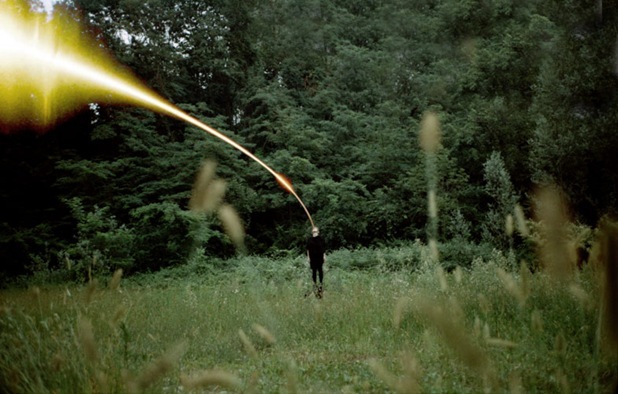The following are excerpts from Stephen’s latest love letter to the Buddha, though in order to write it, he needs to pare away the god-likeness so often called Buddhism. How can I love you if you aren’t human, or at least: another sentient animal? Stephen’s years of dedicated study, in the library and on the cushion, arrive out of love, the language is scholarly, but it all stems from the heart.
*
Questions
Good snowflakes. They don’t fall anywhere else. Layman Pang (740-808)
To dwell in emptiness means to fully inhabit the embodied space of sensory experience, but in a way that is no longer determined by habitual reactivity.
To pose a question with sincerity, you need to suspend all expectations as to what the answer might be.
Religious Buddhists tend to base their practice on beliefs, secular Buddhists tend to base their practice on questions.
Religious: to come to terms with or reconcile ourselves to our own birth and death. 2. Whatever formal means are employed – authority of monastics and priests, performance of rites and rituals, participation in spiritual retreats – to articulate, frame and enact ultimate concerns.
Secular: L. saeculum “This age”, this world. A secular approach to Buddhism is concerned with ways the dharma can enable humans and other living beings to flourish in this biosphere, not in a hypothetical afterlife.
In premodern Asia the Buddhist temple could be a farm, a granary, a courthouse, a fort, a school, an arts centre, a hospital, a bank, an orphanage, a refuge for abandoned animals, as well as a place to perform religious rites and receive pastoral care. One of the consequences of modernization throughout Asia has been to deprive Buddhism of many of its secular functions.
The work of the scholar Jacques Gernet similarly reveals that the large Buddhist monastic institutions in China were enfolded in the mechanisms of the state and owned granaries, treasuries, and slaves.
Stream Entry
The noble community (ariya sangha) that Gotama formed included everyone who had entered the stream of the eightfold path, irrespective of whether that person was a mendicant (bhikkhu) or an adherent (unlike today’s divide between monk/nuns and laity).
The point is to gain practical knowledge that leads to changes in behavior that affect the quality of your life; theoretical knowledge may have little, if any, impact on how you live in the world from day to day.
The dharma is clearly visible whenever greed, hatred and confusion are not active, this is nirvana, immediately present, not something realized only after long years of meditation.
Nirvana: ‘the ending of desire, ending of hatred, ending of confusion.’
The Buddha’s awakening was not achieved by gaining privileged knowledge of an ultimate truth but by seeing the world in a radically different way.
The key to such an awakening lies in emancipating oneself from the pernicious habit of grasping, which turns one’s life into a frustrated and pointless struggle to preserve what is delightful while banishing or ignoring what is tragic.
The key to freeing oneself from the repetitive cycles of reactivity and beholding nirvana is attention. By stabilizing attention through mindfulness and concentration, we begin to see for ourselves how pleasurable and painful feelings trigger habitual patterns of reactivity and craving.
Stream entry: to enter a stream implies that one is no longer trapped in cycles of habitual behavior but can flow freely, just as a stream is guided along its course by its banks, so the eightfold path is sustained and directed by lucid confidence in the Buddha, the dharma and the community.
To enter the stream of the eightfold path means to go against the stream of one’s reactivity, be that of one’s instinctive drives, social conditioning or psychological inclinations.
Four key conditions (for entering the stream of the eightfold path): Embodied attention, association with true friends, listening to the dharma and following its instructions.
Awareness grounded in the breath is the foundation of all contemplative tasks. Meditation is an existential “dwelling” within the primary rhythms of the body that links one seamlessly to the biosphere.
Mara
Self-centered isolation is a state of inner aridity (khila), the opposite of stream entry. (Doubts about teacher and community, anger and displeasure with companions.) A barren where nothing grows. The eightfold path needs to be cultivated in order to let go of the aridity of greed, hatred, confusion.
Mara (Buddha’s nemesis) is sometimes called antaka: the one who imposes dead ends (anta), which, by keeping one caught in cycles of reactive behavior (of exclusive self concern), limit the ability to respond to life with care. Carelessness is “the path to death.” Mara is any physical, social, political, economic impediment to our practice of the four tasks.
When regarded with mindfulness, greed and hatred are seen for what they are: impermanent emotions that, when left to their own devices, will fizzle out. Realizing that they are conditioned processes and not essentially “me” or “mine” takes away their power, hence the concluding phrase: “I know you, Mara.”
Place and Ground
As long as we are preoccupied with place (alaya), we will be blinded to the ground (thana). Place could mean: race, gender, ethnicity, culture, nation, neighbourhood, social position, job, religion, political party, psychological identity. Place and ground are not separate states, but two different ways of configuring a life.
This ground might be compared to a clearing in a forest: an opening that is empty of the foliage that obscures the view and blocks the light, it allows the person to see more and move more freely. Its emptiness allows new possibilities of understanding and new behaviors to emerge.
The shift from place to ground: going against the stream, the cumulative force of reactivity. “Sensual desire, discontent, hunger/thirst, craving, sloth, fear, doubt, hypocrisy, gain, honour, fame, extolling of oneself and disparaging of others.
Clinging Bundles
What we call experience Gotama calls five “clinging bundles” (upadana-khanda), often translated as “aggregates of clinging.”
1. Form (rupa): everything we see, taste, touch, smell, hear.
2. Feeling (vedana): pleasant, unpleasant, neutral.
3. Perception(sanna): experience is differentiated in a comprehensible way
4. Inclination (sankhara): the conditioning factors (patterns of habitual behavior, prompted by encounters with the world). Intention (cetana): actions emerge out of our inner moral stance. Another definition: “There are 3 inclinations: bodily inclinations, verbal inclinations, mental inclinations. Breathing in-out is the inclination of the body; to think and examine is the inclination of speech; and to feel and perceive is the inclination of the mind.”
5. Consciousness
All the bundles work together.
Dharma Danger
One attains nirvana by removing the arrow of reactivity so that no trace of the poison of ignorance remains in the body. This operation is achieved by applying the “probe” of mindfulness and the “knife” of understanding as taught by the “surgeon” (the Buddha)… If the patient fails to take proper care of the wound (in diet and hygiene) it could still get infected and lead to suffering and death.
Fourfold Task
1. Embrace life. Parinna “total knowing” – holistic comprehension. “The ending of greed, the ending of hatred, the ending of confusion . That is called comprehension (parinna) – in other words, nirvana. The first task is the realization of nirvana. Embodied attention is synonymous with comprehending duhha. Each of the tasks emphasize different facets of a single experience.
Dukkha is the tragic dimension of life, implicit in experience because the world is constantly changing into something else. Dukkha is life’s minor key, its bittersweet taste, its annoyingly fugitive charm. The origin of dukkha lies in the very structure of the world itself, not in a state such as craving. An impermanent world like ours is not the kind of place where we will find enduring happiness. The more we embrace this tragic dimension, the more we appreciate beauty and joy exactly because they are fleeting.
2. Let go of what arises. In Buddhist psychology there is ‘contact’ (between sense organ and sense object, creating sensations in the body), that leads to vedana (feeling tone: I like it, I don’t like it, neutral), and this leads to “tanha” (thirst/craving/reactivity). If I like it, I move closer. If I don’t like it, I move away. The second task is to let go of tanha, to release the reaction shot.
Tanha “is repetitive, wallows in attachment and greed, obsessively indulges in this and that: craving for stimulation, craving for existence, craving for nonexistence.” Tanha is a self-reinforcing cycle. In response to lack, tanha wants to fill the inner void with ever more intense stimulation, it inflates the ego and affirms one’s importance in the world, it hankers for intoxication, oblivion, even death. Once reactivity flares up, a person tends to believe and indulge it, fanning the flames, reactivity amplifies pain initially experienced and triggers proliferating thoughts (papanca). The Buddha compared physical pain to being struck by an arrow, which is then unnecessarily amplified by a second arrow of mental disquiet.
The word samudaya (arising) could be literally translated as ‘co-arising,’ while its Tibetan equivalent kun ‘byung literally means ‘all arising.’ Both terms suggest that when a reactive pattern such as hatred arises, it simultaneously triggers an emotion of rage that surges through the organism and configures the world to present itself as intrinsically hateful and fearful.
3. Behold the ceasing. Becoming aware of nirvana = freedom and independence from reactivity (tanha). You see nirvana for yourself – the gateway (dharma door) to an ethical life. How to keep this clearing in the jungle of reactivity, and keep it in view, this is a task as difficult as comprehending dukkha (life) or letting go of reactivity (tanha).
4. The path is to be cultivated (bhavana) moment to moment. Comprehending dukkha, letting go of reactivity, beholding its ceasing – are also aspects of cultivating the path with eight branches: complete view, complete thought, complete speech, complete action, complete livelihood, complete effort, complete mindfulness, complete concentration. Grounded in as complete a view as possible, practitioners aspire to think, speak, act, and work in ways that respond appropriately to situations. These tasks are expressions of a core commitment to realize the values of awakening, the dharma and the community. Cultivating the path together equals: building the city, opening the door to another kind of society.
Sangha: creating and sustaining community.
As Buddhism has spread through the West, many of the most influential teachers and writers have not been ordained monastics but men and women whose authority has lain in their personal integrity and example rather than their ecclesiastical rank.
B’s famous last words: Things fall apart. Tread the path with care.




